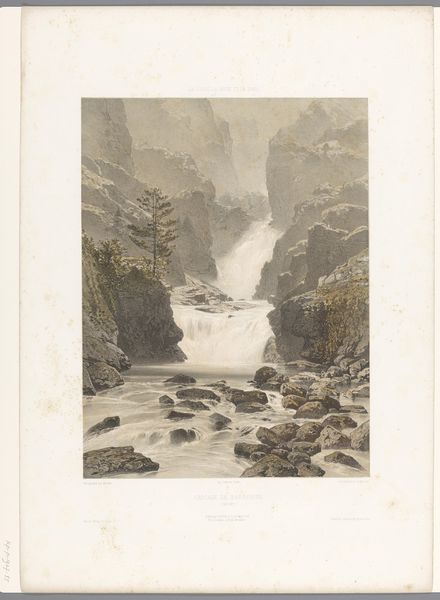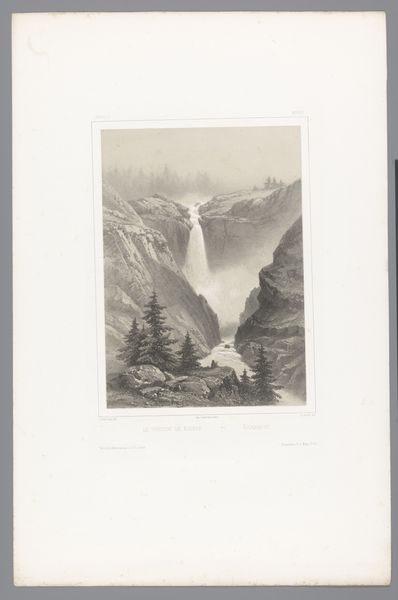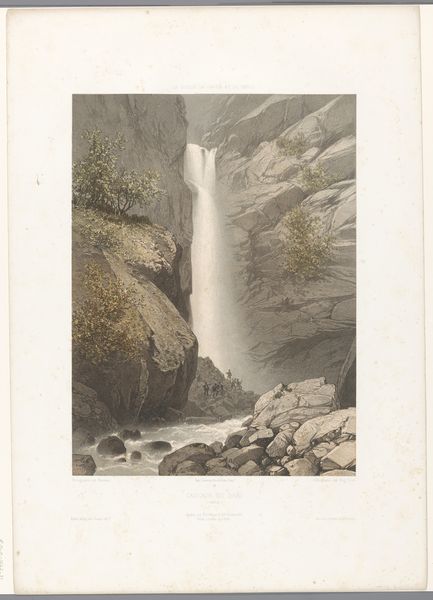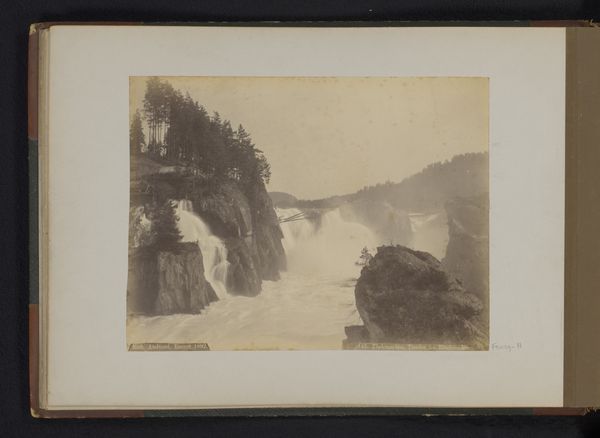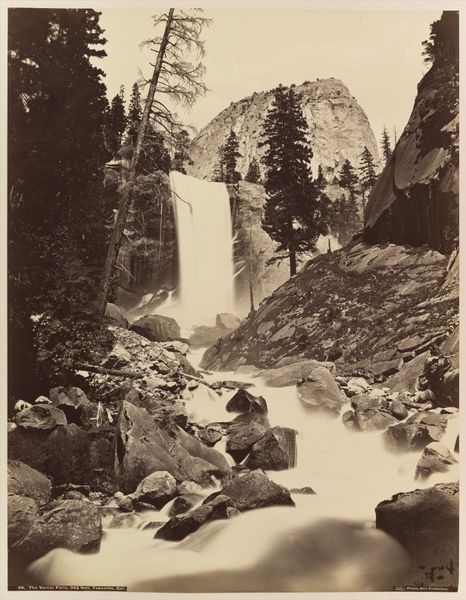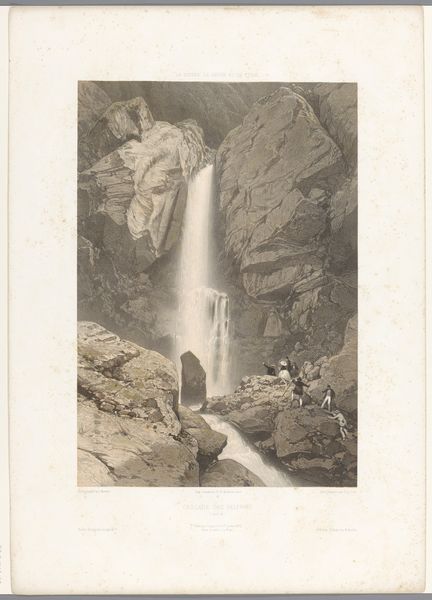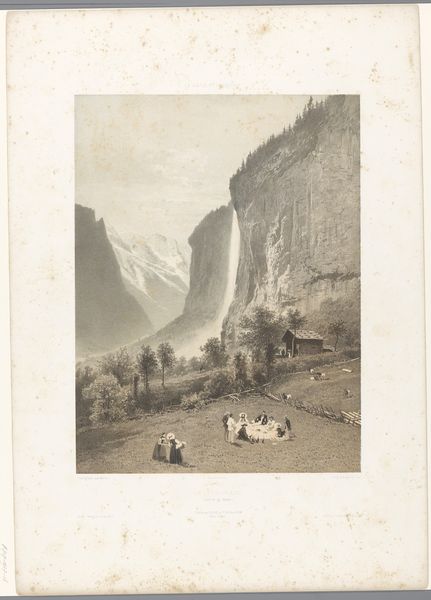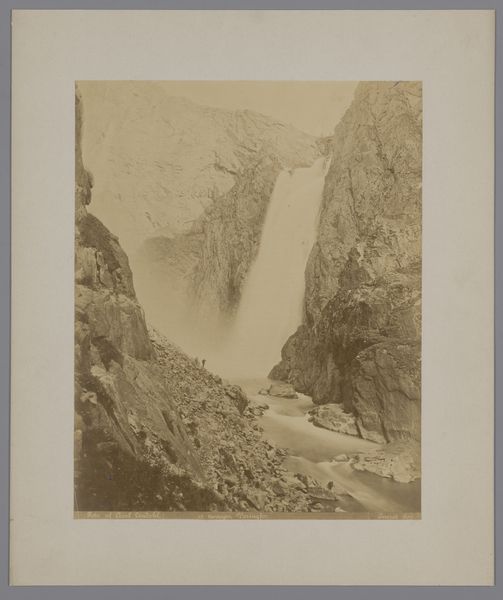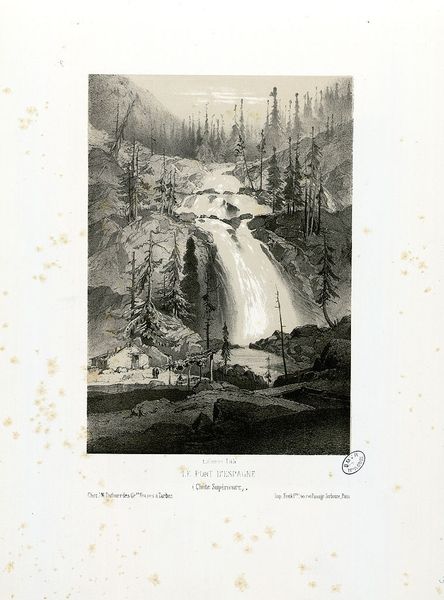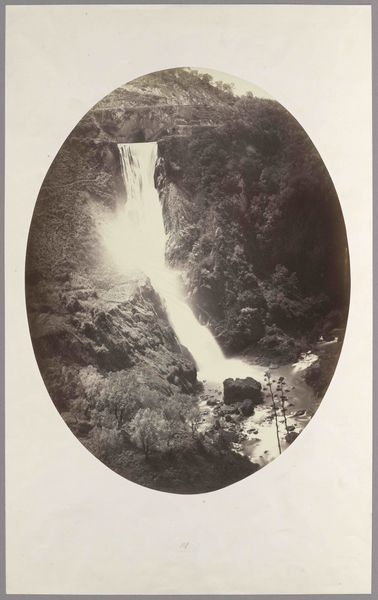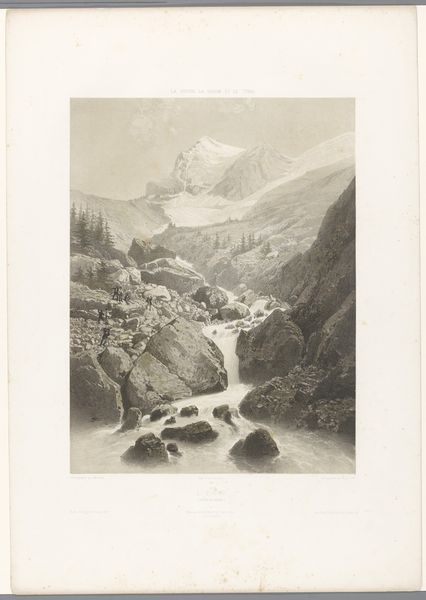
Dimensions: height 565 mm, width 400 mm
Copyright: Rijks Museum: Open Domain
Eugène Cicéri made this lithograph, 'Zicht op de Bérard-waterval', sometime in the mid-19th century. The image offers us a picturesque view of the Bérard waterfall in the French Alps, a location popular with tourists at the time. But what does it mean to capture a landscape like this as an image? In the 19th century, the rise of tourism transformed the way people related to nature. Places like the Alps became destinations, and images like this one played a role in shaping that experience. Think about the visual codes at play here: the sublime grandeur of the mountains, the romantic allure of the waterfall. These weren't just natural features; they were cultural constructs. Consider the role of institutions, too. Museums, galleries, and even the burgeoning tourism industry influenced how artists like Cicéri chose to represent the world. By examining travel guides, tourist brochures, and other archival material, we can understand the social conditions that shaped this and other landscape images.
Comments
No comments
Be the first to comment and join the conversation on the ultimate creative platform.
